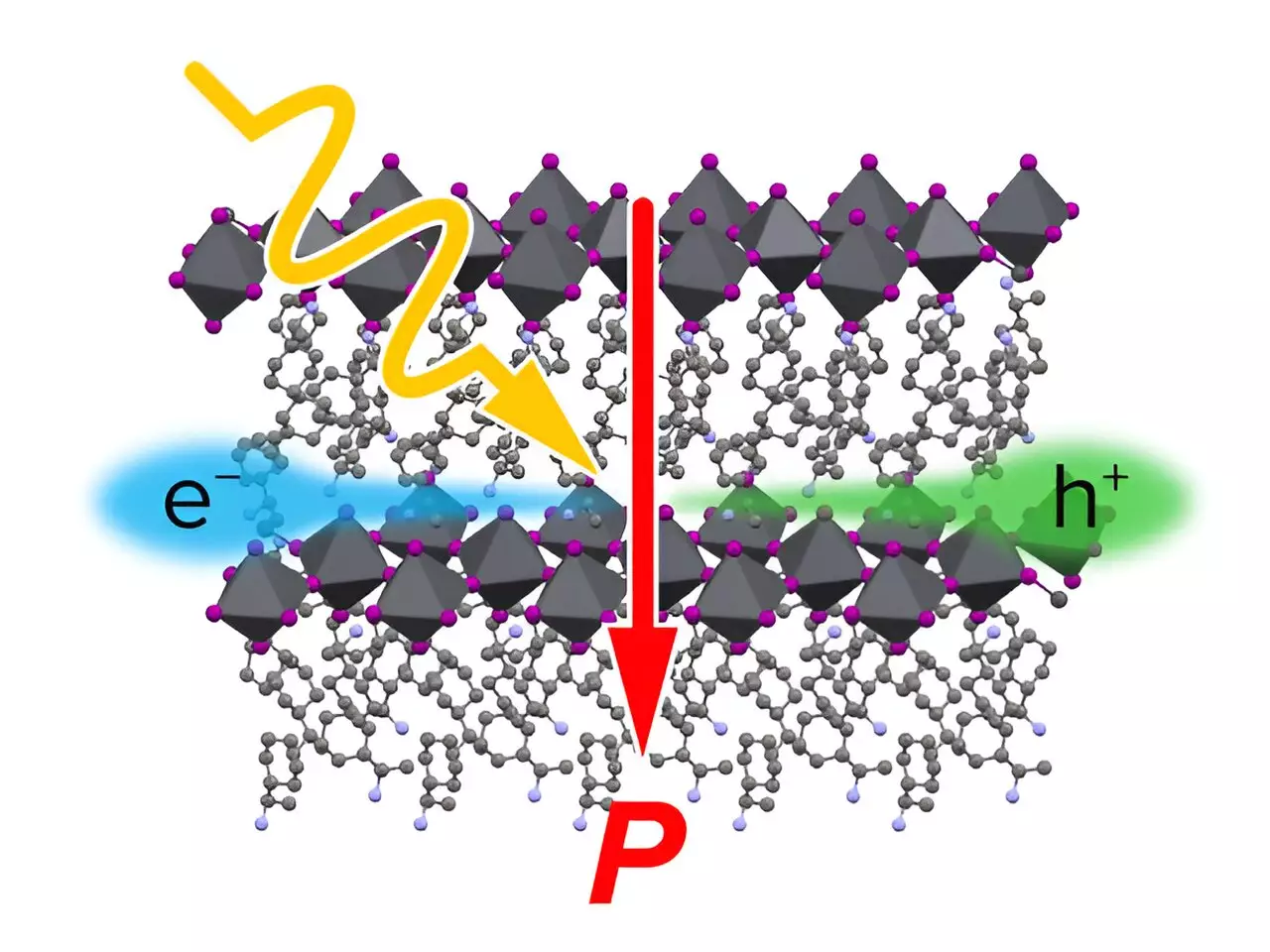The conversion of light into electricity is a fundamental process that underpins the function of solar cells. In recent years, there has been increasing interest in the study of the bulk photovoltaic effect, a phenomenon that involves a single material and has the potential to greatly improve the efficiency of solar cells. A team of researchers led by RIKEN has conducted a study to investigate the conversion efficiency of special crystals and shed light on the mechanisms behind this phenomenon. Their findings have important implications for the development of more efficient solar cells.
Solar cells operate based on the photovoltaic effect, which involves the conversion of light into electricity. Traditional solar cells are composed of two semiconductors that are joined together. One semiconductor has an excess of electrons, while the other is electron-deficient. This setup allows for a high conversion efficiency, as the excess electrons in one semiconductor can move to the electron-deficient semiconductor, generating a flow of current.
In addition to the traditional photovoltaic effect, the bulk photovoltaic effect has gained attention in recent years. This effect, as the name suggests, only involves a single material. While its current conversion efficiency is relatively low, recent research has suggested ways to improve it. Understanding the mechanisms behind the bulk photovoltaic effect is crucial for optimizing its efficiency.
The mechanisms behind the bulk photovoltaic effect have been a topic of debate in the scientific community. Initially, it was believed that an electric field generated by polarizations within the material gave rise to the effect. However, a new explanation has gained traction in recent studies. According to this explanation, light causes shifts in the electron clouds within the material, which then propagate and generate a current. This mechanism offers several advantages, including an ultrafast response and dissipation-less propagation.
Organic-inorganic hybrid perovskites (OIHPs) have emerged as promising materials for optoelectronic devices. The bulk photovoltaic effect in OIHPs was previously attributed to the macroscopic polarization mechanism. However, solid evidence supporting this hypothesis was lacking. In their study, the team of researchers led by RIKEN set out to investigate the bulk photovoltaic effect in OIHP crystals in detail to gain a better understanding of the underlying mechanisms.
Through their experiments, the researchers observed the bulk photovoltaic effect along a non-polar axis in an OIHP crystal, which contradicts the predictions of the macroscopic polarization mechanism. This observation provides evidence in support of the shift mechanism, suggesting that the movement of electron clouds in OIHP crystals plays a significant role in the bulk photovoltaic effect.
One of the key insights gained from the study is the importance of crystal symmetry. The researchers found that the observations of the bulk photovoltaic effect were consistent with the shift mechanism and could be explained by considering the crystal symmetry of the OIHP material. This finding highlights the potential for optimizing the properties of OIHPs by tailoring their symmetry, which in turn could improve their efficiency in converting light into electricity.
Building upon their findings, the RIKEN research team plans to explore other classes of materials to further investigate the generation of shift currents. They believe that shift currents can also be generated in materials such as liquid crystals and organic molecular crystals. This exploration of new materials and their photovoltaic properties could open up new avenues for the development of more efficient solar cells and other optoelectronic devices.
The study conducted by the RIKEN researchers sheds light on the mechanisms behind the conversion of light into electricity using special crystals. By providing evidence in support of the shift mechanism, the researchers have challenged the widely accepted macroscopic polarization mechanism. The insights gained from this study have important implications for improving the efficiency of solar cells by optimizing the properties of organic-inorganic hybrid perovskites. With further research and exploration of different materials, the development of more efficient solar cells and other optoelectronic devices is within reach.



Leave a Reply